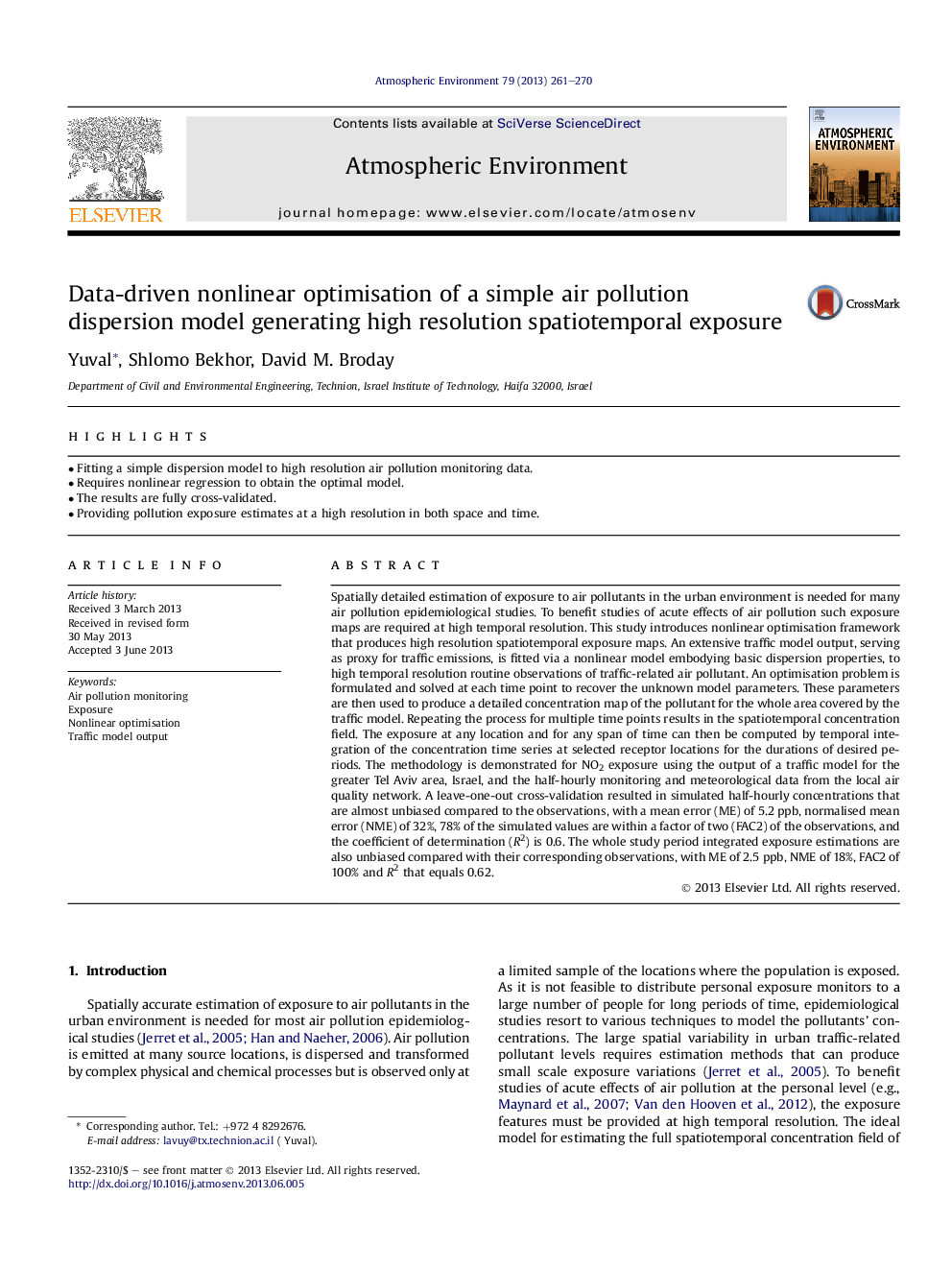| Article ID | Journal | Published Year | Pages | File Type |
|---|---|---|---|---|
| 6341461 | Atmospheric Environment | 2013 | 10 Pages |
â¢Fitting a simple dispersion model to high resolution air pollution monitoring data.â¢Requires nonlinear regression to obtain the optimal model.â¢The results are fully cross-validated.â¢Providing pollution exposure estimates at a high resolution in both space and time.
Spatially detailed estimation of exposure to air pollutants in the urban environment is needed for many air pollution epidemiological studies. To benefit studies of acute effects of air pollution such exposure maps are required at high temporal resolution. This study introduces nonlinear optimisation framework that produces high resolution spatiotemporal exposure maps. An extensive traffic model output, serving as proxy for traffic emissions, is fitted via a nonlinear model embodying basic dispersion properties, to high temporal resolution routine observations of traffic-related air pollutant. An optimisation problem is formulated and solved at each time point to recover the unknown model parameters. These parameters are then used to produce a detailed concentration map of the pollutant for the whole area covered by the traffic model. Repeating the process for multiple time points results in the spatiotemporal concentration field. The exposure at any location and for any span of time can then be computed by temporal integration of the concentration time series at selected receptor locations for the durations of desired periods. The methodology is demonstrated for NO2 exposure using the output of a traffic model for the greater Tel Aviv area, Israel, and the half-hourly monitoring and meteorological data from the local air quality network. A leave-one-out cross-validation resulted in simulated half-hourly concentrations that are almost unbiased compared to the observations, with a mean error (ME) of 5.2Â ppb, normalised mean error (NME) of 32%, 78% of the simulated values are within a factor of two (FAC2) of the observations, and the coefficient of determination (R2) is 0.6. The whole study period integrated exposure estimations are also unbiased compared with their corresponding observations, with ME of 2.5Â ppb, NME of 18%, FAC2 of 100% and R2 that equals 0.62.
